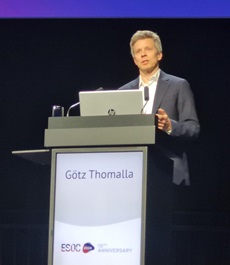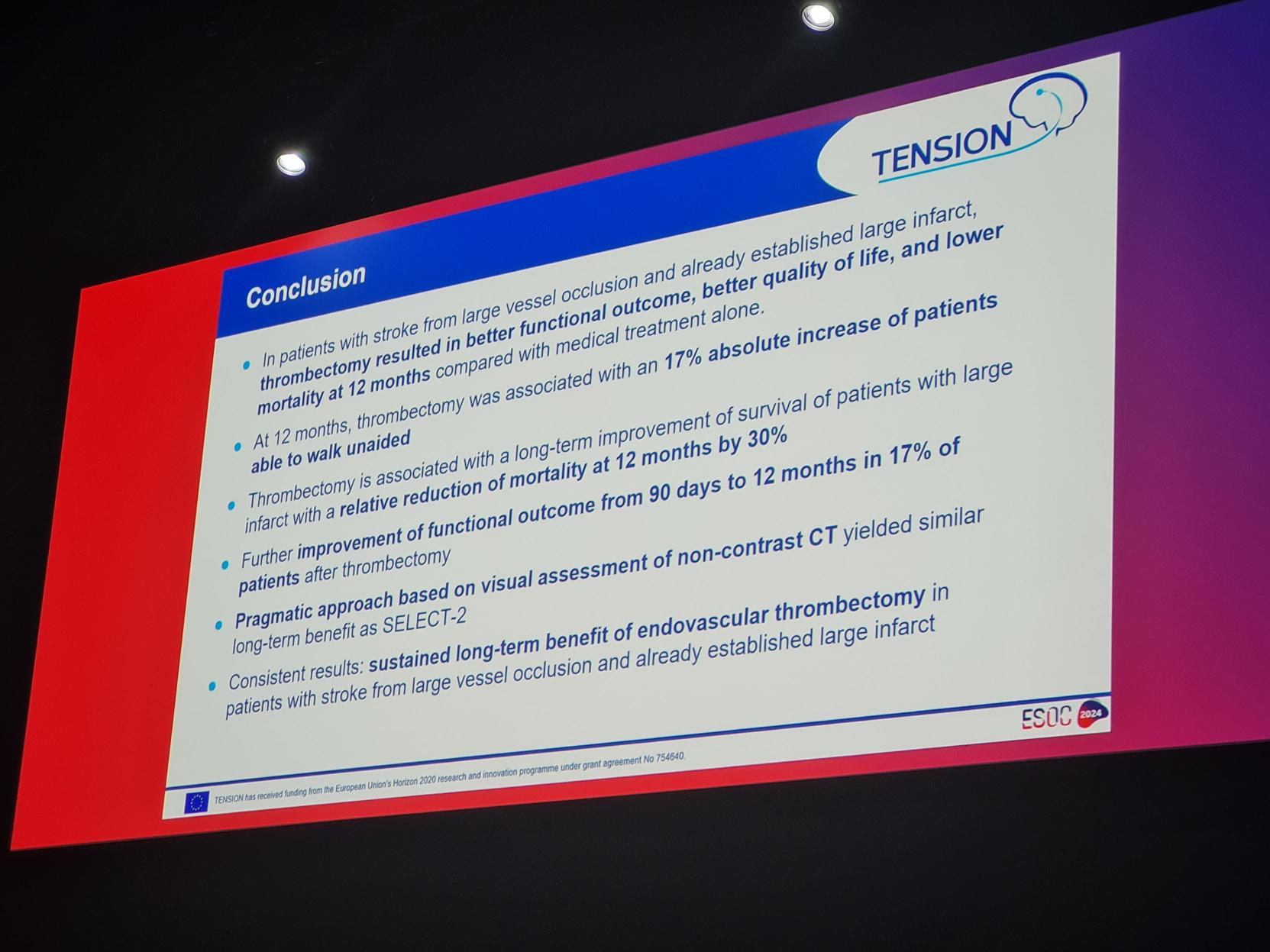
The TENSION trial, conducted across 41 hospitals in Europe and Canada, has unveiled new insights into the long-term efficacy of endovascular mechanical thrombectomy in patients suffering from acute ischaemic stroke caused by large infarcts. Götz Thomalla (University Medical Center Hamburg-Eppendorf, Hamburg, Germany), the study’s principal investigator, delivered these findings today at the European Stroke Organisation Conference (ESOC; 15–17 May, Basel, Switzerland).
Until recently, the effect of thrombectomy in patients already showing extensive signs of infarction was unknown—but, TENSION, alongside other randomised controlled trials, has since provided high-grade evidence that patients with extensive ischaemic changes on brain imaging still benefit from mechanical clot removal. However, while the short-term benefit measured at three months after stroke had already been demonstrated, long-term outcomes in this patient population remained largely uncertain.
Over the course of the TENSION study, researchers enrolled 253 patients suffering from acute ischaemic stroke with a large infarct due to large vessel occlusion (LVO) in the anterior circulation. Selection of patients was based on non-contrast computed tomography (CT) and CT angiography only, without the use of perfusion imaging. Patients were randomly assigned to receive either thrombectomy alongside medical treatment or medical treatment alone within 12 hours from the onset of stroke symptoms.
Building on three-month data favouring thrombectomy in TENSION, the trial’s more long-term findings show that the intervention was associated with less disability, as measured by a shift on the modified Rankin scale (mRS) at 12 months. The study also revealed a 12% absolute reduction in mortality among patients who received thrombectomy compared to those who underwent medical management alone—despite a high overall mortality rate of more than 45% in both treatment arms.
Importantly, according to the TENSION investigators, the benefits of thrombectomy extended beyond mere survival, with patients reporting a substantially improved quality of life at the 12-month follow-up timepoint, as evidenced by higher scores on both the EuroQol five dimensions (EQ-5D) questionnaire index and the visual analogue scale (VAS), indicating enhanced overall health status and wellbeing.
Having confirmed the long-term benefit of endovascular thrombectomy in patients with large infarctions, investigators believe that the results of TENSION mark a “pivotal moment” in stroke care, further expanding the therapeutic horizon for patients with acute ischaemic stroke.
“Even with this simple and pragmatic diagnostic algorithm,” Thomalla stated, “endovascular thrombectomy in patients with large infarcts was safe and resulted in significant long-term benefits in functional outcome, which will likely have practical implications for stroke centres.”










